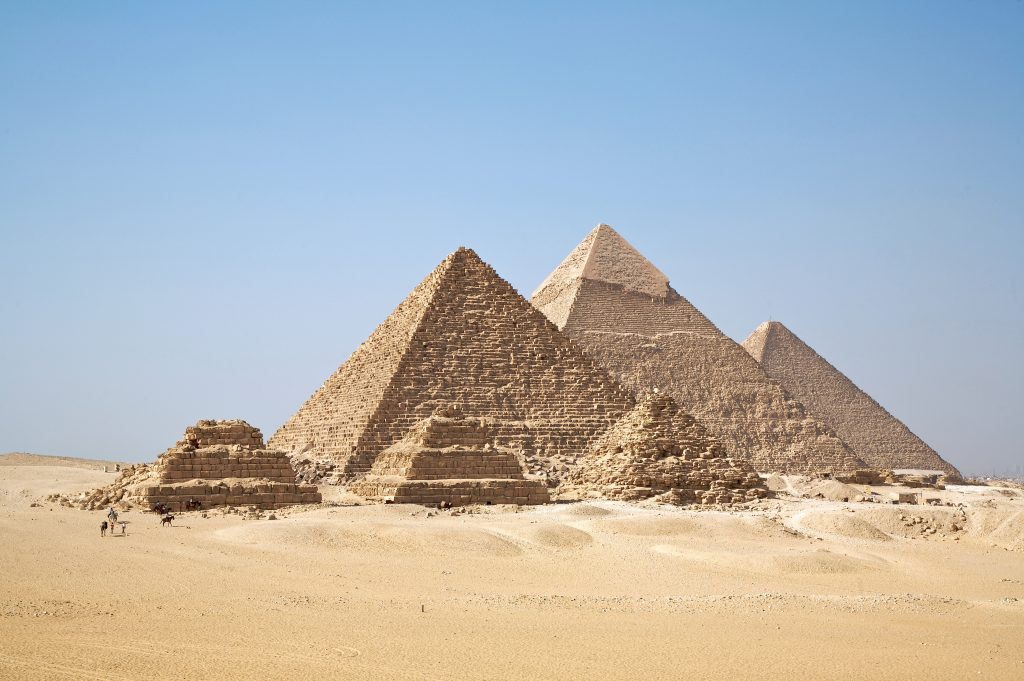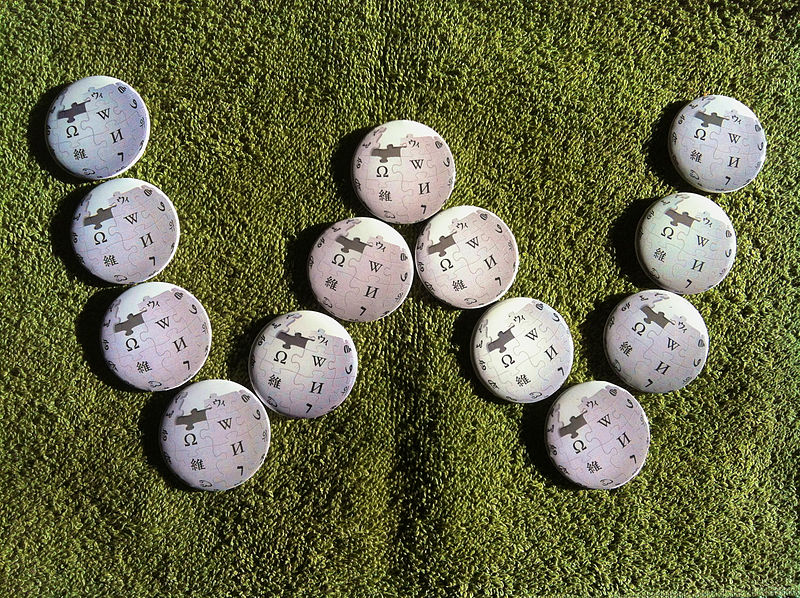Not much more than a year before Napoleon rose to become the leader of France, he led an army across the Mediterranean in an effort to conquer Ottoman Egypt. The campaign resulted in failure three years later, but three years was more than enough for the invasion force’s unusually large scientific contingent to uncover many artifacts from Egypt’s ancient past, like the Rosetta Stone.
Western European interest in ancient Egypt skyrocketed with the publicizing of these discoveries by the British, who took possession of many of them when the French army in Egypt was forced to surrender—and that interest has persisted to the present day. I talked with pseudonymous volunteer Wikipedia editors Iry-Hor and Mr Rnddude, who both focus on ancient Egypt.
- What fascinates you both about ancient history, and specifically the Egyptians?
Iry-Hor: Ancient history, from the Neolithic revolution until the end of the Bronze age (c. 1100 BC) is the central yet short period over which we grew out of more than 200,000 years of relatively slow-paced prehistory and into a bewildering race to technological advancement and total planetary dominance. This makes me very curious as to what exactly happened then. I always find it thrilling to read ancient sources relating long past events which would have vanished were it not for a few surviving texts. Now the Egyptians are, with the Sumerians, the oldest civilisation there is, with hieroglyphic writing appearing roughly simultaneously with cuneiform (the skeptics can see Abydos tomb U-j). At the same time, the Egyptians advanced the organisation and concept of state much further and much more rapidly than the Sumerians. Fascinating stuff.
Mr Rnddude: History has always been interesting to me. I’ve always wondered about things like: “what were the Greeks up to?”, “How did the Romans rise and fall”, etc. In the case of the Egyptians, I find the pyramids to be the most interesting, followed by their complex and extensive mythology, and then the hieroglyphic writing form. I get to cover all three topics while writing about the pyramids. That’s really about it.
- To Iry-Hor, why the fifth dynasty?
Iry-Hor: When I started reading Ancient Egypt topics on Wikipedia, I decided to do it systematically by going back in time from Cleopatra until the earliest ruler I could reliably find (the actual Iry-Hor), reading all the articles along the way. This was in 2012, and although I could follow internal wikilinks until the Second Intermediate Period of Egypt, at this point the article quality completely broke down. Most were very sketchy and nearly all contradicted one another. I ended up contributing a lot on this period, not only to remove the contradictions and add all the missing pharaohs but also to present competing hypotheses in a consistent way. In addition, since a picture speaks a thousand words, I decided to try to have at least one picture per article pertaining to an historically attested pharaoh of that period, something which User:Khruner, others, and I finally completed recently after many adventures (e.g. the picture of the scarab of Sekheperenre necessitated lengthy dealings with the Ashmolean Museum).
At the same time, I realised that while working on a difficult and confusing historical period is interesting, many great pharaohs had sketchy articles too. I thus started to randomly select rulers to work on, such as Intef III, Neferhotep I, Seth-Peribsen and Amenemhat IV. At this point I had started to write good articles, yet every time my work felt unfinished to me, thus I had to make a featured article out of every pharaoh I could work on. (Editor’s note: “featured” and “good” articles are markers of high quality on the English Wikipedia, having been peer reviewed by fellow editors against several editorial standards. They are usually abbreviated as “FA” and “GA,” respectively.) The Fifth Dynasty was the perfect fit for this task : there is a wealth of sources and material owing to the continuing excavations in Abusir, it is weirdly popular with readers, it is rich in great pharaohs, yet was poorly covered by Wikipedia. It has long-lived kings (Nyuserre Ini, Djedkare Isesi) and shadowy figures (Shepseskare, Menkauhor Kaiu), kind rulers (Neferirkare Kakai) and anecdotes, e.g. Sahure was apparently so enthralled at the success of his expedition to Punt that he made a relief of himself taking care of trees brought back by the expedition. He is the only pharaoh ever to have been depicted gardening. So that was it. I now realise that the 5th Dynasty is also full of truly important firsts in Egyptian history, all of which will be synthesised in the final article—on the dynasty himself.
- Do you have any academic training in ancient history?
Iry-Hor: Not in Ancient History, no; unfortunately I was pushed to study maths and physics when I was a student as I was doing pretty well on these subjects and did not have enough self-confidence at the time to say I wanted to do something else. I have tried to make up for this regret by learning Middle Egyptian hieroglyphics, some Akkadian, and the general chronology of the Early Dynastic and Old Kingdom periods but this is all self-taught. 1 hour per day did the trick back when I had lots of free time.
Mr Rnddude: No, nothing formal. I chose ancient history as an elective for my senior years in high school, alongside biology, chemistry and physics. History is just a subject that interests me. I went on to study aviation, for a pilot, at University. History is unrelated to my career choice, unless I become an aviation historian at some point.
- What are your favorite articles you have written and why?
Iry-Hor: This is hard to tell, reason tells me to like Nyuserre Ini for the amount of research I have invested in it, but I have a soft spot for the featured article on Sheshi, a relatively obscure pharaoh of the Second Intermediate Period. Sheshi was a lot of fun to research as he is one of the few very well attested pharaoh regarding whom you can find Egyptologists disagreeing with one another on every single aspect of his life, time and reign. Sheshi was today’s featured article on the 1st of March. (Editor’s note: Today’s featured articles appear on Wikipedia’s main page, and usually receive tens of thousands of views in those 24 hours.)
Mr Rnddude: Battle of Antioch (218), as the first article and A-class I ever worked on; followed by Caracalla, one of two Roman emperor Good Articles I’ve written; and Pyramid of Neferirkare, the first pyramid I’ve worked on and my first Featured Article.
- What challenges have you faced in writing these featured and good articles?
Iry-Hor: Writing a featured article is a lot of work and the main challenge for me is to find the time needed to do enough research to be satisfied that the article covers everything there is to be known. Beyond this, I can see from my earlier wikipedia work that it takes time and efforts for a wikipedian to learn to write good or featured articles. It seems to be a kind of maturation process that’s needed to grow from a young editor and into a featured article author. I read the article « Wikipedians are born, not made », and while I adhere to the analysis presented by the authors (even my first days of activity fit with their predictions!), I would add that the birth is only the beginning and experienced wikipedians are made through continuing efforts.
Mr Rnddude: The challenges were different for each article. For the Battle of Antioch, the main challenge was getting to grips with reliable sourcing. I predominantly used the ancient texts of Cassius Dio and Herodian of Antioch backed with secondary sources. This was before I had ever heard of any Wikipedia policy and I’d really just picked some random article to work on. I got it through GA easily enough, but failed the first military history (MILHIST) wikiproject A-class review, primarily because of the abundance of primary sources in the article. One particular section was overflowing with primary sourcing and had to be rewritten to comply with Wikipedia’s policy on original research. I managed to get it accepted at A-class in my second attempt. (Editor’s note: A-class is another marker of high quality on the English Wikipedia, albeit not widely used.) I’m not, however, satisfied that the article meets FA standards.
My next two articles were written at the same time, those for Macrinus and Caracalla. Both are current GA articles. The major challenge for both these articles was the writing. I can get a lot of research done in fair order, but writing and researching simultaneously led to very jarred prose. Caracalla in particular was a problem because of the breadth and depth of research available on him. I ended up having three reviewers at GA for that one article. The original reviewer felt the prose needed work, but that this could be accomplished in short enough order to justify putting the article on hold while I worked on it. A second reviewer came in towards the end of the review with extra comments. Their primary concern, as I recall, was with the historiography section of the article. They felt that the authors and historians opinions presented were not authoritative enough to be mentioned and that the article lacked stronger sources in that section. They also had problems with prose elsewhere, but I was in the middle of rectifying those concerns as it was. Finally, a third reviewer dropped by noting that a historiography section was above and beyond what was required for GA and summarily passed the article once the prose issue had been dealt with. By this point the review had been on hold for a month. That was by far the most difficult experience I had had at any review. It did not help that I was simultaneously having Macrinus undergo the same process. I have worked on a couple of other GA articles since that time: Burebista, a Dacian king who has become a legendary figure in Romanian historiography, and Gaius Antonius Hybrida, a ruthless consul of the Roman Republic.
Finally there is my first Featured Article: Pyramid of Neferirkare. In terms of challenges, I had most barriers removed through the help of Iry-Hor. When I needed a source, Iry-Hor provided it to me. When I nominated the article for GA, Iry-Hor took on the review and helped me suss out the finer details to move the article a few steps ahead. The article was ready for an FA review when I submitted it. I’ve had lots of helpful comments and no major issues. I should credit Tony1 for writing a brilliant guide for writing featured article worthy prose which certainly helped me improve my writing, and I should mention Ceoil’s assistance in tightening the prose.
- How does Wikipedia’s coverage of ancient history compare to other sources on the internet?
Iry-Hor: There is no question that Wikipedia is far beyond other web sources, with the exception of certain specialised encyclopedias, such as the Oxford Encylopedia of Ancient Egypt (which isn’t supposed to be available on the web by the way…). And even there, I can say that good and featured articles are always more detailed, broader and richer than the corresponding entries on the specialised encyclopedias. Unfortunately, Wikipedia is still very much patchy, with few such high-quality articles and many important topics are far from good enough to win the comparison. Take for example the article on the Old Kingdom of Egypt. I am convinced that we will ultimately get there however, as every article is only one wikipedian away from reaching featured quality.
Mr Rnddude: Wikipedia is all over the shop with regard to the quality of its articles. In my experience, ancient history articles that haven’t had a guiding hand tend to fall into one of two groups. (1) Stub or short articles in need of great expansion. This issue is prevalent among more obscure topics and persons. (2) Generally comprehensive and detailed, but disjointed and poorly sourced articles. Every article I’ve worked on falls into one of those two categories. It’s difficult to compare it to other online sources because the answer is quite varied. In comparison to other free sources, usually better. In comparison to paid or subscription sources, often more detailed but less accurate.
- Why do you think so many people remain fascinated by the ancient Egyptians even today?
Iry-Hor: I must say this remains mysterious to me: while I can understand that people are drawn to the Great Pyramid of Giza, Ramses II or Akhenaten, I do not quite understand why Djedkare Isesi or Unas receive between 60 and 120 readers a day on average. These numbers might seem tiny to people working on popular topics, but they still represent thousands of views every year for pharaohs that are far from well-known ! Even the most obscure pharaohs (try Nuya, Wazad or Wepwawetemsaf) get at least 5 – 6 views a day. A back of the envelope calculation shows that no more than 1 view a week corresponds to someone hitting the random article button, so that leaves you wondering why someone would want to read about Nuya ? Anyway, I am just glad I could contribute on these articles!
Mr Rnddude: In one word: pyramids. Pyramids are the quintessential icon of the ancient Egyptian world. If you know even one thing about the Egyptians, it’s going to be the great superstructures that stand as the last surviving ancient wonder of the world. It helps that their purpose and construction remains shrouded in mystery.
- What articles are coming up next for you both?
Iry-Hor: Userkaf and Sahure both need to reach FA to complete the 5th Dynasty, and after that the article on the Fifth Dynasty of Egypt itself would have to be written. This will be a monumental task, as we will try to cover everything from the administration, religion art and architecture of the period. I hope that Mr Rnddude will provide his expertise on pyramid construction techniques and mortuary temple architectures for this article. Once this is done, an all-featured topic with 10 articles (more if some pyramids reach FA) will be completed and the 5th Dynasty spell will finally be broken. I might then finish the article on the Gebel el-Arak Knife, or see if Pepi I and Sobekhotep IV need help.
Mr Rnddude: I’m taking a short break from the Fifth Dynasty right now. There are nine pyramid articles for the period that I’m aiming to bring to featured article status. I have brought one pyramid to FA, one pyramid to good article status, one was brought to GA by Iry-Hor, and the rest are in various stages of development from stub to generally comprehensive. I’ve been doing some work on the Twelfth Dynasty’s Senusret II and his pyramid. Whether or not I’ll pursue GA for those two articles is to be determined. I just chose them for a change of pace.
- Where are you from, and what do you do for a living?
Iry-Hor: I shall only say that I hold a 1851 Research Fellowship and work on algebraic combinatorics and quantum mechanics. Publish or perish makes work very stressful for young researchers like me and so editing Ancient Egyptian articles is a welcomed break from the pressure. As a consequence, I have vowed never to edit Wikipedia on any other topic—a vow I broke only 5 times, always for minor edits.
Mr Rnddude: I’ll keep my real name to myself. I currently live in South-East Queensland, Australia. I’m not a fully qualified pilot yet, but I’m working towards that goal. I am employed currently, working on construction sites. A dull job, and not one I intend to stay in for much longer.
- Did I miss anything?
Iry-Hor: I just wanted to add that Wikipedia is now a well-known resource among academics, with a pretty good reputation and the lofty purpose of collecting User:Emijrp/All_Human_Knowledge and making it freely available painfully contrasts with some scientific publishers. This is often more than enough to persuade established researchers to send you a copy of an article you can’t access or some help of some sort if you ask them.
Interview by Ed Erhart, Senior Editorial Associate
Wikimedia Foundation




